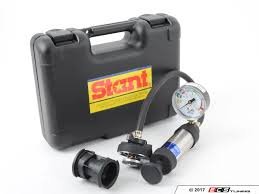Thanks for all the guidance folks. The last post I checked was from March 3rd, so didn't see all of the additional info come through. I've been doing this in my driveway, so due to all the storms we've had here, it's taken some extra time. In short, I got it all back together this afternoon, and got it running again. This was most certainly a timing issue. Here are some notes from the process along the way:
- The 400 timing cover doesn't bolt to the oil pan at the bottom like the 351. You
have to drop the pan to get the pan and cover to seat properly. I tried to drop the front half of the pan to sneak it in and it was impossible.
- So, I ended up dropping the pan. I couldn't pull the pan out completely and read elsewhere that you actually have to shim the engine at the motor mounts to pull it all the way out. I didn't want to do that, so managed to clean the block and the plan while it was floating beneath. It sucked but it worked. While I was reattaching the pan, one of the bolts mid-way back on the driver's side snapped. I attempted to extract it while the pan was still on, but it's almost impossible to do without the clearance for a drill head. I've decided to leave it as-is for now. I'll monitor for weeping on that side and if it gets bad, I'll drop the whole pan again. I didn't see the notes on the rear main seal, or inspecting the bearings, etc. in time but
visually everything looked fine. There was plenty of nylon in the pan, but no metal that I found. I cleaned it all out. Nothing was stuck to the pump filter.
- Regarding the distributor. Since I could "grab" the oil pump shaft I felt confident I could adjust the distributor so I did pull it up and reset it. It was a tooth off. The prior owner had moved all the plug wires one position to make up for it and get the slack for timing adjustment. I put the plug wires back where they're supposed to be, and confirmed everything was sequenced correctly.
- I ended up installing a new radiator. I left it in for the gear replacement as there is plenty of room (bad move). I must have banged it too hard when I was prying the old gears and chain off, as a small leak developed.
- The thermostat was swapped, but not before one of the stat housing bolts snapped. Luckily, there was enough still sticking out of the block that I was able to extract it. Used PB and double-nutted it out.
- Ended up putting a new harmonic balancer on just so I don't have to deal w/ that in the future. It was $40 so feel like money well spent. The old one was in pretty bad shape.
- I re-painted all my sheaves, they look great.
- Purchased a timing light from harbor freight (without the digital tach) and got everything timed to 6deg. BTDC per the hood sticker. Idles great when warm.

Drove it around and it now operates like a normal vehicle. Not quite as much power as I'd expect from a 400 (I'm not burning any tires), but imagine some of that is due to carb adjustment.
Now for some new questions:
- Immediately after starting the truck up following the service, I had some coolant drip down and collect on the ground directly below the water pump. My immediate thought was that the supply connection at the pump wasn't tight enough, but it was. It looks like there was a small leak around the bottom of the pump. It was running down and dripping off the bottom front of the timing cover. Everything was torqued to spec (18ft/lbs). I'd say maybe an eighth of a cup collected on the ground, if even that much. Then it just stopped. Drove it around the block, no more leak. Left it parked for a couple hours with a big sheet of cardboard under the truck, no leaks. Is this normal? Is it possible that the cover heated up and the gasket/gasket sealer activated?
- It's clear that the carb and choke need to be adjusted. It doesn't idle / choke properly as its warming up. Does anyone have a good reference for the sequence of operations for "tuning" and adjusting the Motorcraft 2150?
- When I was working on the oil pan, I noticed a big gap at a "secondary" cover plate at the bottom of the bell housing. (I can send photo of this if helpful). This small plate sits over top of the larger bell housing cover (where flywheel is located). Both mounting screws are in place, but one must be stripped as it can't be tightened. Should I be concerned about a gap here?
- I did witness quite a bit of transmission fluid which has collected on the bottom of the tranny pan. Wiped it all off to see how bad it gets after next drive. Going through the transmission may be the next thing to evaluate. (This is a C4, or whatever they called the automatic model below the C6). Thoughts on going through tranny? Ok to drain and flush, or could that create new problems?
Thanks all for the continued help!!!!
L7
View attachment 30914

